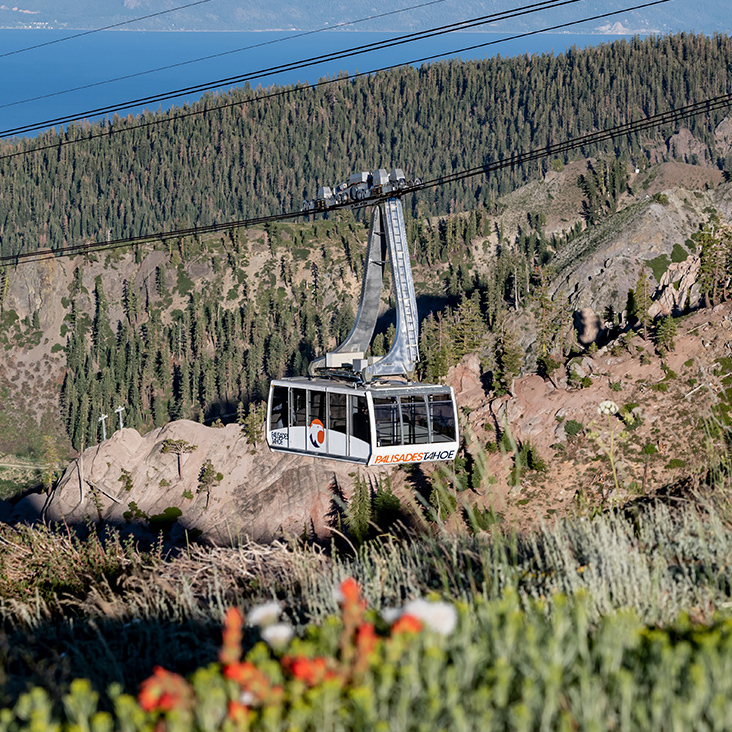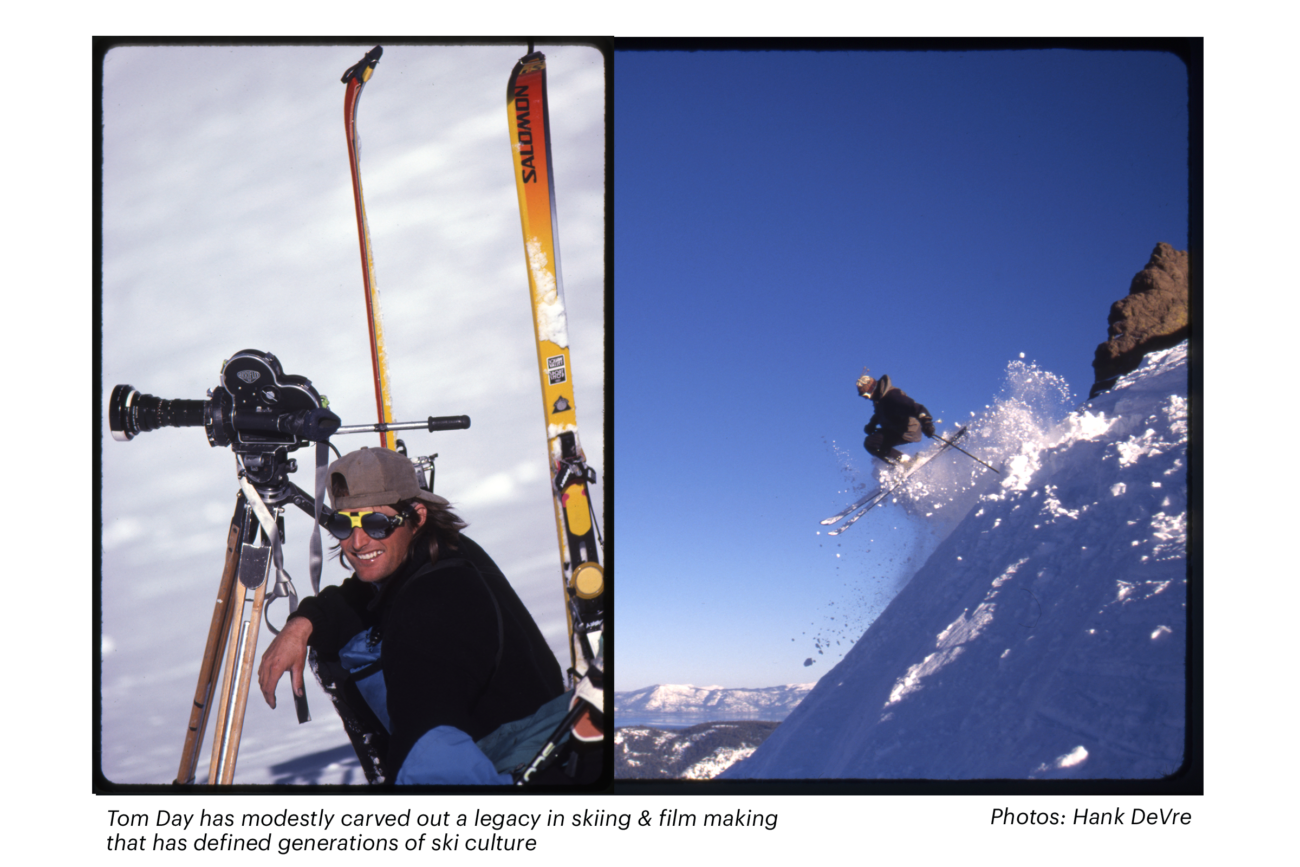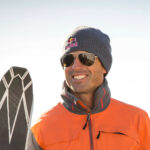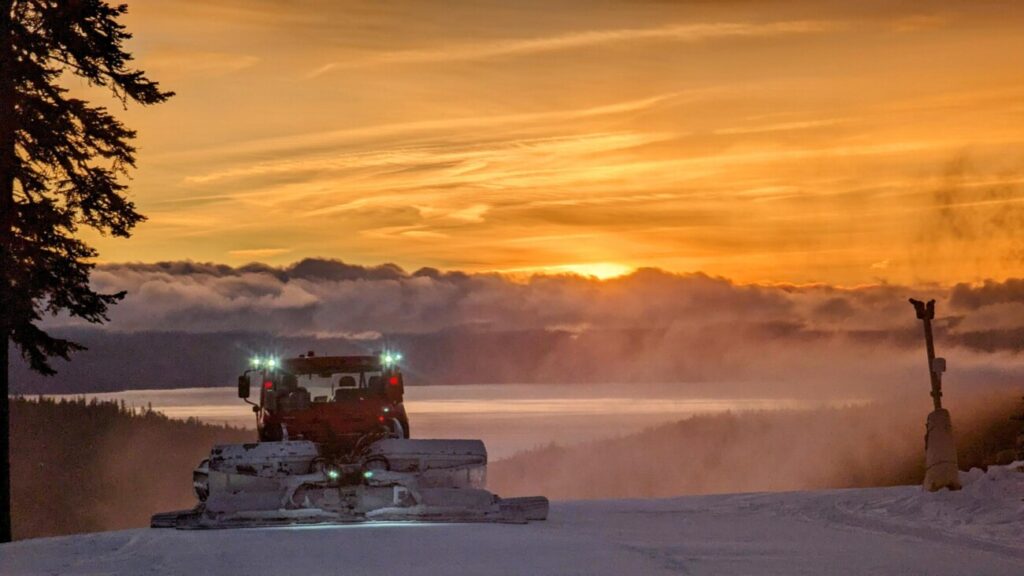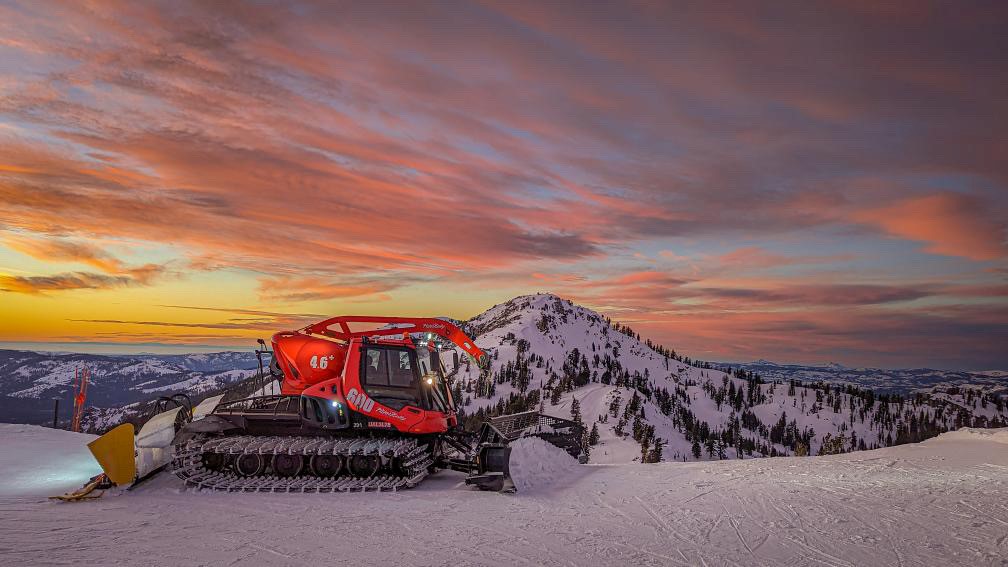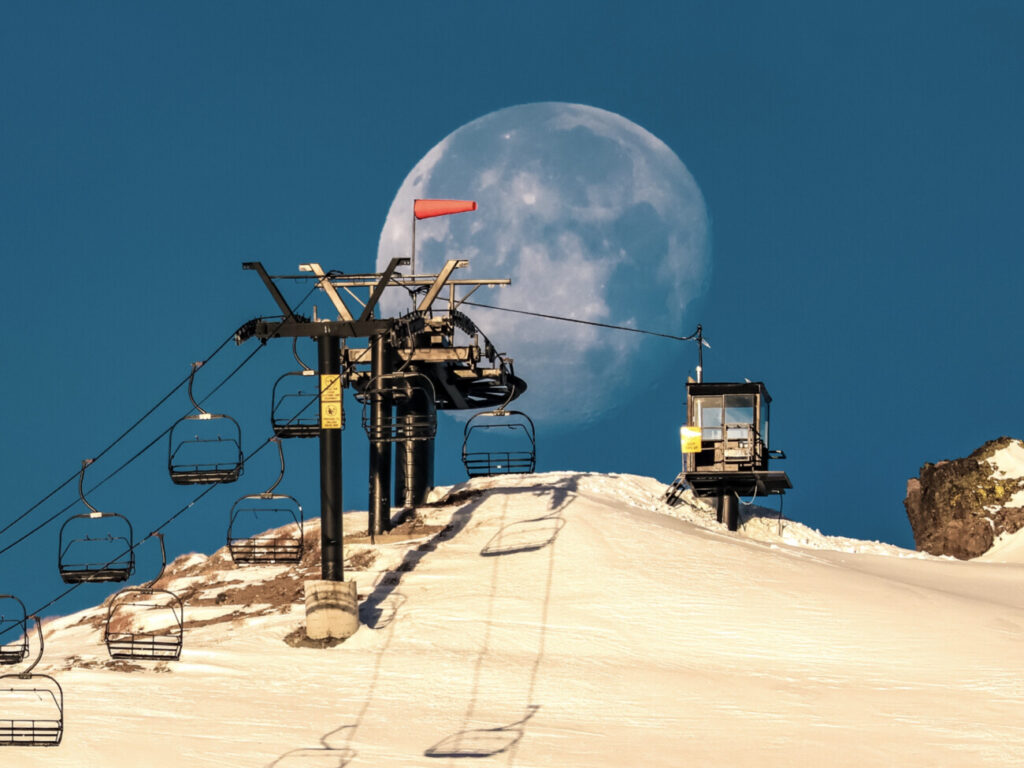Spring 1995 4:12 PM.
On a cold, snowy mid-week afternoon, I stopped on the Exhibition cat track during last lap and looked around. The sun, seemingly aware of the lifts having just closed, parted the clouds and revealed the fingers in pristine beauty. Cold mountain air fueled my body, dry snow squeaked beneath my skinny skis. The empty KT-22 double chair passed overhead with its’ familiar, slightly unnerving, rattle.
“More, more, more” had been my mindset since I got out of school two hours earlier, but not at this moment. Right then and there, there was no place in the world that I would rather be. Not even back up top for one more run.
I stood alone and content. All was right in the world. When I turned to leave, there was Tom Day, standing silently beside me. How had I not noticed him?

Tom Day is a skier. He moved to Olympic Valley, CA from Bolton Valley, VT just in time for the 82-83 ski season to set it’s hook in the young skier’s soul with an onslaught of 352 inches of snow at the mountain’s base. One afternoon Tom was at work, tuning skis at the Sport Shop when his friend Scot Schmidt walked in. Casual conversation led to Scot extending an invitation that would change Tom’s life forever. “Warren Miller is coming to town next week. Would you like to ski with me for the shoot?”
With skinny skis, no helmets, and only occasionally goggles, Tom, Scot, and their crew proceeded to tick off then-nameless lines defining the proving grounds for skiers and riders for the next half-century. It was a special time for freeskiing, “extreme skiing” as it was known back then. Many revolutions in skiing are fueled by advancements in technology, but in the mid-1980s, this was not the case. No. Day, Schmidt, Huntoon, and Andrews originated fast and committed skiing style with nothing more than curiosity and bravado.
No zone was a greater catalyst for this bold style of straight-lining and cliff hucking than the Palisades and their crown jewel, the Chimney. The massive quarter pipe topped with 150ft cliffs was perfect for the 220cm downhill race skis of the time. Their lengthy platform provided flotation and was stable at speed and the exponential curve of the outrun made turning optional. Visible from three lifts, Gold Coast Lodge, and countless vantage points atop its unnaturally level summit, the Sades were Squallywood’s ultimate arena.
Little went unnoticed. Careers were born. Scot Schmidt stole the show. He and his antithesis Glen Plake became extreme skiing’s first superstars. Tom Day made it too.
“Making it” as a skier is a phrase with many definitions, but one underlying theme: living the dream, and skiing to one’s heart’s content. Strong relationships, unwavering passion, and hard work fuel the dream as much as expertise at one’s craft. Tom embodies these principles with zero deviation.

Tom Day stands 5’ 10” tall with a twinkle in his blue eyes and a wide smile that has never been faked. He is an absolute weapon on a pair of skis. Light on his feet, effortless and smooth, he creates power through precise angulation, clever turn placement, and generous use of speed. His turn has that certain magic that can’t be taught but is always envied.
Tom skis 150 days each year, over half of them at Palisades Tahoe where he lives in a small home on a south-facing slope overlooking the ski resort and a dirt driveway full of the Day family’s circa 1970 Volkswagens. Tom is keenly in tune with nature’s offerings. Hiking, biking, alpine lake ice-skating, or even harvesting stone for his cabin’s hearth, four seasons of the year, Tom has a sixth sense for the place to be.
Tom became a staple of the Warren Miller films, skiing his way onto the big screen with shoots on several continents and cutting his teeth in the consequential high alpine of Chamonix, France.
1988 was a milestone year for Tom. On the second day of September, his son Danny was born. A few weeks later his cinematography made its big-screen debut in theaters worldwide. That year’s Warren Miller film included follow-cam, point-of-view, and scenic film shots that Tom had taken under the tutelage of mentors Gary Nate and Brian Sisselman. The shots were creative and unprecedented. He held a film camera while jumping a road gap and took scenic aerial shots from a hang glider. The combination of risk-taking and pioneering a new perspective was a harbinger of things to come. A new chapter began with Tom on the other side of the camera lens, but the ski movie-star chapter would never end.
Anchored by skiing and motivated by the career longevity he foresaw as a cameraman, Tom bought a 16mm film camera. “$500 for an around the world airplane ticket” Tom reminisces on that initial investment “it was my ticket to keep traveling.” The used windup Bolex had three lenses affixed to it and no battery. It was incredibly capable in the right hands.
Tom’s cinematography soon began to shine with the same indescribable magic as his skiing. He refined the art of filming backlit and was an early adopter of the use of an intervalometer to achieve time lapses. Film cinematography in the 80s and 90s meant waiting weeks, even months to see any given shot. Results were reasonably predictable when filming in an established style, using reference points for such things as light readings, framing, frame rates and the like. But these new styles of filming Tom was dedicating himself to could only be mastered through risk-taking, calculated estimations and a heck of a lot of trial and error. Through patience, perseverance and a ceaseless fascination with nature’s beauty, these disciplines of filmmaking came to define Tom’s filming style.

In the mid-1990s Tom was a key player in another frenzy of historic descents that would withstand the test of time. Supported by an exploding industry, snowboarders like Jim Rippey, Noah Salasnek, Terje Haakonsen, Johan Olofssen, and Dave Hatchett were absolutely annihilating first descents in Alaska. They’d shred thousands of vertical feet in a matter of seconds, racing their own avalanches, scrubbing speed through slide turns that skiers couldn’t yet perform. Endless terrain, fat heli-budgets, and no rules, this was the heyday of skiing and snowboarding’s final frontier. At the center of it all was Tom Day, hanging out the door of some cowboy of a pilot’s helicopter, in his purpose-built harness. That is Tom’s style: right at the cutting edge, under the radar, fully engrossed in the place to be.
2022 is the 38th consecutive year that Tom will make a Warren Miller ski movie. It is the 40th year he has lived in Olympic Valley, and his 34th year of marriage with Lizzy. He’s skied K2 skis his entire life, sponsored or not. He has been called upon by Hollywood to shoot and direct action in such films as Molly’s Game and Vin Diesel XXX. He won an Emmy for cinematography alongside his son Danny in 2021 for his work on Life Below Zero. His ski descent of the Chimney in the snowboard film TB3 (Totally Board 3) dropped the jaws of even the most hardcore knuckle draggers. He recently sent it again at age 58. Last year, he and Scot Schmidt reunited to swap lines for Warren Miller Entertainment’s Future Retro. Make no mistake, at 60 years old, Tom rips.

Shooting Jeremy Jones 
With family at The Chammy
As great as all that is, Tom can’t be defined by his resume. Recognition, prestige and the accompanying dollars and cents are not what drive him. No doubt, it is the life that he built by following his heart that fulfills him. As Tom puts it, “being able to raise Leanore (daughter) and Danny here in the valley and instilling in them the passions for the mountains that Lizzy and I share is the absolute joy of my life.” When asked of the future, Tom states with clarity “I want to become a ski bum again… Free every day to go to the mountain, go ski wherever I want and at a pace that just feels right at that particular moment. If I stop early, cool. If I go til four, better.”
I just called him to fact-check this article. He is riding Headwall. I think I will go join him.
